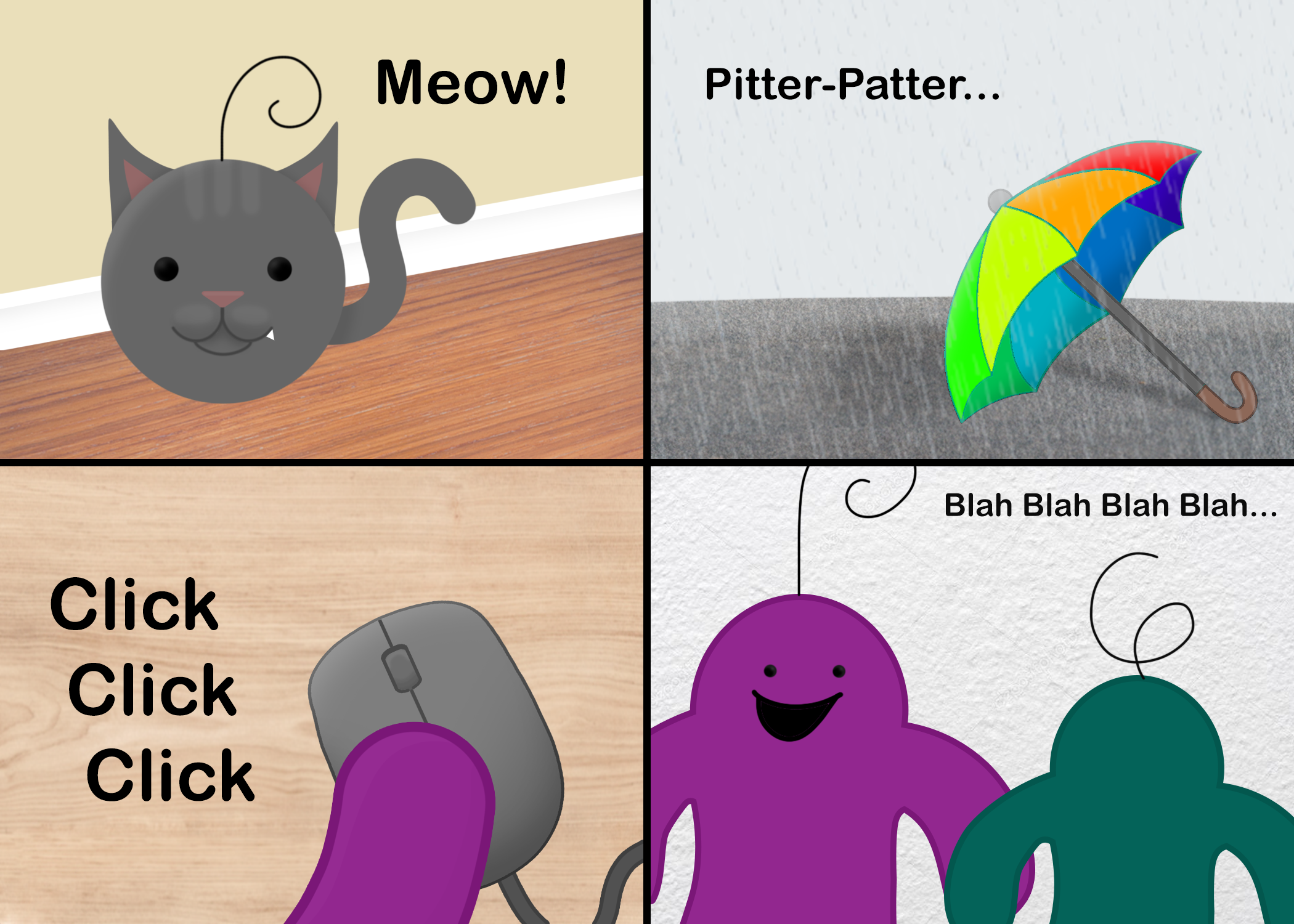Last time, we talked about how you can spice up your storytelling using the simple magic of pictures. If you haven’t read that post yet, check that out here! This week, we’ll be talking about how you can use sounds in your stories. Keep an eye out for future installments in this series!
Have you ever tried to tell a story, and at a loss for a better word to describe a sound, begun imitating a noise? Sometimes, you might have to make an effort to accurately imitate the sound, but other times you might instinctively use a common word for it in your language. For example, imagine you’re talking to your friend and you start telling a story that goes something like this:
“Last Tuesday, I woke up and Midnight wasn’t in her bed! She’s an indoor cat and only ever likes to go outside for short periods of time, so I thought she must have run away. I was really sad that day…until I heard her meowing under the couch!”
That word you used, meowing, isn’t really a word, is it? At least, not in the traditional sense. Imagine you had to explain the same story to an alien who had no idea what cats were. You wouldn’t really be able to define the word you used without explaining that the word sounds like a human version of a sound cats make. Even then, the alien might not really understand what the original cat sounded like. So by using that word in your story, you (in some ways) assumed that your audience consisted of only English-speaking* humans, as only that group would be familiar with the word. Sound-words like these are more formally known as onomatopoeia, and they show up everywhere if you know where to look!
Onomatopoeia can help you convey a point without wasting your audience’s time. If your listener isn’t a bewildered alien, there is no reason to waste their time with information that does absolutely nothing for your point. In the last example, you were able to convey that Midnight was your cat, suggest that she made a loud and easily recognizable noise, and even drop a good hint of what that noise probably sounded like…all with a single word!
Another nice thing about onomatopoeia is that there’s a lot to choose from! There are plenty of words that are already commonly used to describe sounds in the English language that your listener will most likely recognize upon use.
If you need some ideas for onomatopoeia to incorporate into a story! Here are some of my favorite resources that you can use for inspiration.
- https://www.vocabulary.com/lists/240643
- https://www.rd.com/list/examples-of-onomatopoeia/
- https://examples.yourdictionary.com/5-examples-of-onomatopoeia.html
- https://www.writerswrite.com/grammar/onomatopoeia/
Aside from popular onomatopoeia, you can also make up your own sound effects! To practice, you could try listening to sounds and imitating them. Maybe you can try playing a sound effect game with your family or friends, like these Youtubers did in the video below.
https://www.youtube.com/watch?v=hjxgfavkDkA
While some people seem to have a natural gift for doing impressions, it’s possible for you to get a little better at doing them with a little practice. And who knows, doing a spot-on impression of something or someone could add the perfect touch of humor to your story!
Here’s a helpful video with a few impressions you can start off with! Maybe you’ll find these easy, maybe you won’t. But even if you had a bit of a hard time with these (I know I did!), you’ll probably find it to be silly and fun anyways.
https://www.youtube.com/watch?v=6kgotpnoqyE
In the end, regardless of whether you chose to use the onomatopoeia that already exists in your language, make up your own sound effects, or do impressions, mixing fun sound effects into your storytelling speech is a great way to engage and even coax a good chuckle out of your audience!
Look out for our next installment in this series, where we’ll go over another tool you can use in your storytelling speeches!
*Here’s an interesting fact: Different languages have subtly different interpretations of that same sound based on their different phonetic systems! For example, Japanese people have interpreted it as nyan or nyao, while Korean cats say yaong!


